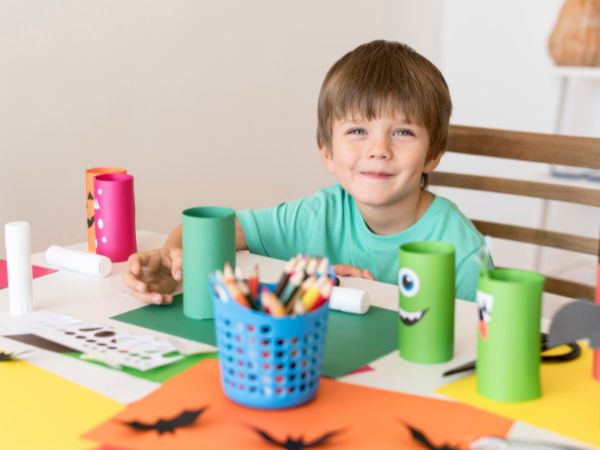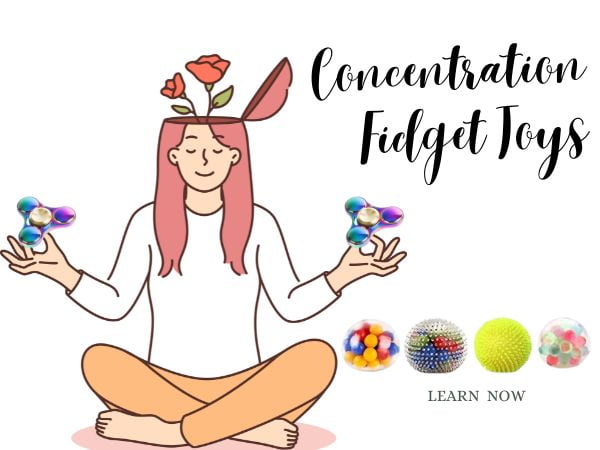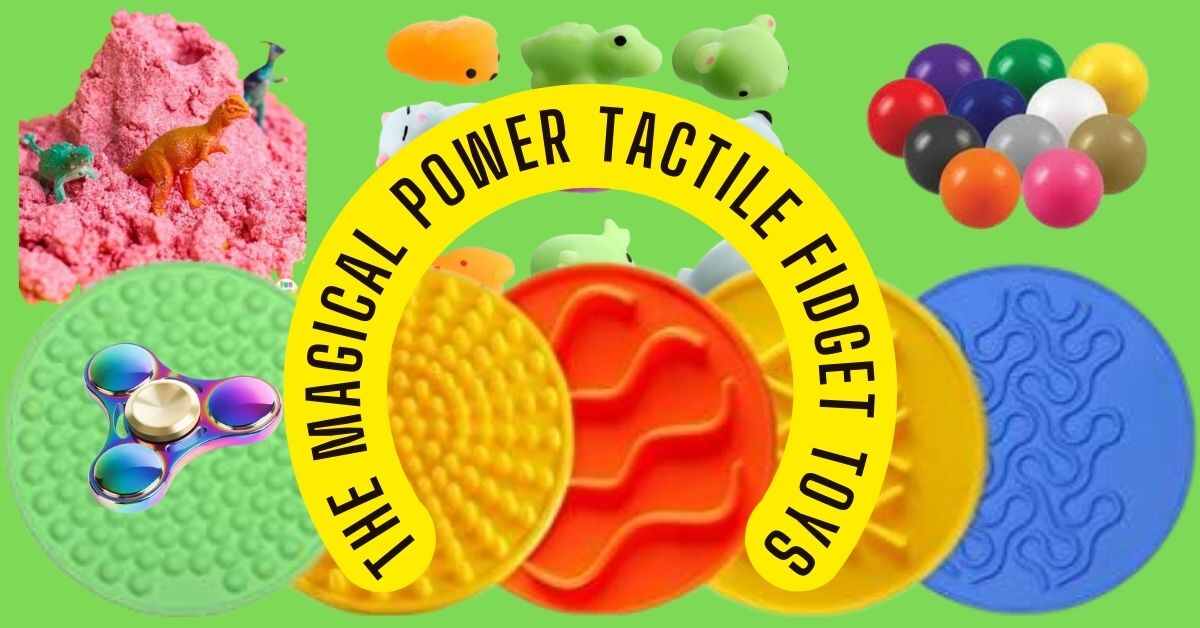Sensory kits for kids have emerged as powerful tools in nurturing holistic child development. Beyond mere play, these kits engage children’s senses, fostering growth in motor skills, focus, and emotional well-being.
I. Introduction
In the journey of childhood development, there’s a captivating realm that engages young minds, fostering growth in many ways beyond imagination—enter the world of sensory kits for kids. These magical tools are more than just playthings; they’re gateways to a richer understanding of the world around us.
Table of Contents
A. Brief Definition of Sensory Kits
Sensory kits for kids are carefully curated collections of items designed to engage a child’s senses—touch, sight, sound, smell, and taste. They serve as dynamic tools that stimulate and enhance sensory experiences, contributing profoundly to a child’s developmental milestones.
B. Importance of Sensory Experiences for Child Development
Why do sensory experiences matter? The answer lies in the pivotal role that they play in a child’s overall development. From refining motor skills by nurturing emotional intelligence, sensory activities lay the foundation for a robust cognitive, emotional, and social framework.
II. What are Sensory Kits for Kids?
Sensory kits for kids are thoughtfully crafted packages of joy, each brimming with a variety of textures, colors, sounds, and scents. These kits are designed to captivate a child’s imagination, encouraging exploration and learning through play.

III. What is the 5 Senses Toolkit?
At the heart of sensory kits is the concept of the 5 senses toolkit—a comprehensive approach that targets each sense individually. This toolkit encompasses tactile elements for touch, vibrant visuals for sight, melodious sounds for hearing, aromatic scents for smell, and even safe, taste-friendly components.
IV. The Science Behind Sensory Play
A. Neurological Benefits
Engaging in sensory play triggers a symphony of neurological responses in a child’s brain. It stimulates neural connections, fostering a rich network that aids in information processing, problem-solving, and overall cognitive development.
B. Impact on Cognitive Functions
Sensory play is not just about the senses; it’s a workout for the brain. It enhances memory, sharpens attention spans, and promotes critical thinking—a holistic approach to cognitive development.
C. Emotional and Social Development
Beyond cognitive functions, sensory play holds the key to emotional and social growth. By navigating various sensory stimuli, children learn to express emotions, understand others, and build the foundations of empathy and cooperation.
V. What do you put in a sensory kit?
Crafting sensory kits for kids is an exciting and personalized endeavor, tailored to engage and captivate a child’s senses. The magic lies in selecting a diverse range of items that stimulate touch, sight, sound, smell, and taste. Here’s what to put in a sensory kit:
| Category | Sensory Kit Contents |
| Tactile Elements | – Textured Fabrics: Soft, fuzzy, rough fabrics |
| – Sensory Balls: Various sizes and materials | |
| – Feathers and Felt: Providing a unique tactile experience | |
| Visual Stimuli | – Colorful Toys: A spectrum of engaging colors |
| – Mirrors: For reflective play and self-awareness | |
| – Flashlights or Glow-in-the-Dark Items: Visual stimulation | |
| Auditory Elements | – Musical Instruments: Shakers, tambourines, mini xylophone |
| – Nature Sounds: Recordings of calming nature sounds | |
| – Sound Books: Interactive books with sound effects | |
| Olfactory and Gustatory Components | – Scented Playdough: Various aromas for olfactory stimulation |
| – Spices and Herbs: Natural scents like cinnamon or lavender | |
| – Taste-Safe Items: Edible play items for safe exploration | |
| Interactive and Creative Materials | – Water Beads or Gel: Fascinating textures for sensory touch |
| – Art Supplies: Non-toxic crayons, markers, and paper | |
| – Small Objects for Sorting: Cognitive development items | |
| Personalization | – Favourite Toys or Comfort Items: Inclusion of beloved items |
| – Family Photos: Personalizing the kit with familiar faces | |
| Safety Considerations | – Age-Appropriate Items: Ensuring suitability for the child’s age |
| – Supervision: Always supervise playtime for safety |
VI. What are the benefits of a sensory toolkit?
Sensory toolkits offer a multitude of benefits, including:
- Enhanced Cognitive Abilities: They stimulate the senses and positively impact cognitive functions, promoting better memory and problem-solving skills.
- Social Development: Engaging in sensory kits for kids fosters sharing, cooperation, and communication, nurturing vital social skills.
- Self-Regulation: Sensory experiences provide a constructive outlet for emotional expression, aiding in self-regulation.
VII. Benefits of Sensory Kits for Kids
A. Enhanced Motor Skills
Sensory kits for kids act as dynamic playgrounds for the development of the fine and gross motor skills of children. Through activities like squeezing sensory balls, manipulating textures, and engaging in hands-on play, children refine their motor skills, laying the groundwork for precise movements crucial in daily life.
B. Improved Focus and Attention
In a world filled with distractions, cultivating focus and attention is a valuable skill. Sensory play, with its immersive and captivating experiences, helps children to sharpen their abilities. Whether it’s exploring the feeling of different textures or concentrating on the soothing sounds of a sensory kit, the benefits extend beyond playtime.
C. Emotional Regulation and Stress Reduction
The emotional rollercoaster of childhood can be navigated more smoothly with the aid of sensory kits for kids. By providing a safe space for emotional expression, these kits become a haven for stress reduction. The tactile, visual, and auditory elements contribute to emotional regulation, empowering children to navigate their feelings with confidence.
VIII. How does the sensory system work for kids?
The sensory system is the gateway through which children interpret the world. It comprises five main senses—sight, hearing, touch, taste, and smell. When a child engages with sensory stimuli, sensory receptors send signals to the brain, creating neural connections that form the basis of perception, learning, and behavior. So sensory kits for kids are useful tools for holistic development.
IX. Who needs sensory toys?
Sensory toys are beneficial for a diverse range of individuals, including:
- Children with Sensory Processing Challenges: Those who may struggle to process sensory information effectively.
- Children with Special Needs: Sensory toys cater to different abilities, providing inclusive play opportunities.
- All Children: Every child can benefit from sensory play, as it enhances overall development.
X. Do kids need sensory toys?
Yes, kids greatly benefit from sensory toys. These tools are not only enjoyable but also essential for fostering cognitive, emotional, and social growth. Sensory toys for kids are versatile, and adaptable to individual needs, making them a valuable addition to every child’s playtime.
XI. Why is sensory good for kids?
Sensory play is crucial for children’s development because it:
- Stimulates Neural Connections: Enhances brain development and neural pathways.
- Encourages Exploration: Promotes curiosity and a love for learning.
- Supports Emotional Well-being: Assists in emotional regulation and stress reduction.
XII. Is baby sensory good for kids?
Absolutely! Baby sensory activities are designed to cater to the unique needs of infants, offering gentle stimuli that aid in sensory development. Engaging babies in sensory play from an early age sets the stage for a lifetime of positive sensory experiences.
XIII. Sensory Kit for 1 year old
Crafting a sensory kit for a one-year-old involves:
- Soft Textures: Plush fabrics and soft toys for tactile exploration.
- Bright Colors: Visual stimulation through vibrant, contrasting colors.
- Gentle Sounds: Toys that produce soft sounds to engage the auditory senses.
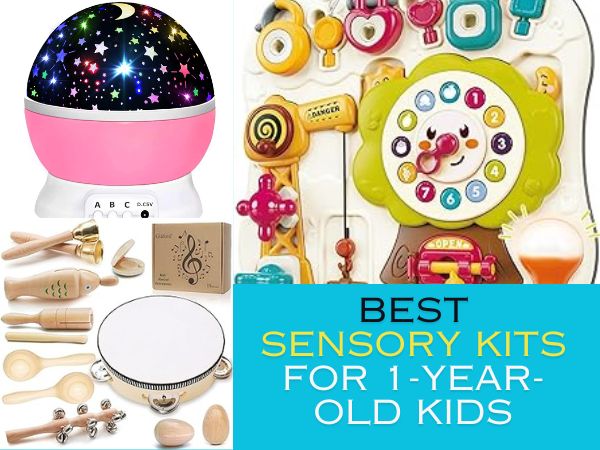
XIV. Sensory Kit for 2 year old
For a two-year-old, consider including:
- Building Blocks: Enhance fine motor skills through stacking and building.
- Mess-Free Art Supplies: Introduce creativity with finger paints or textured art materials.
- Nature Exploration: Bring in natural elements like sand or pebbles for tactile experiences.

XV. Sensory Kits for Kids Amazon
Amazon offers a variety of sensory kits for kids, including:
- Educational Sensory Kits: Focused on learning through play.
- DIY Sensory Kit Components: Individual items for custom sensory experiences.
- Themed Sensory Kits: Geared towards specific interests or developmental goals.
XVI. Best sensory kits for kids
The best sensory kits for kids cater to individual preferences and needs, but some notable options include
- Melissa & Doug Deluxe Pounding Bench: This enhances fine motor skills.
- Play Learn Sensory LED Bubble Tube: Provides mesmerizing visual stimulation.
- Sensory Scout Explorer Kit: Outdoor-themed kit for nature exploration.
XVII. DIY Sensory Kits for Kids
Crafting your DIY sensory kits for kids is a rewarding experience. Consider:
- Texture Variety: Utilize items like rice, pasta, or fabric for diverse tactile experiences.
- Scented Items: Add scents with spices, herbs, or scented playdough.
- Creative Play Elements: Include art supplies, building blocks, or natural materials for imaginative play.

XVIII. What are sensory toys examples?
Here are some delightful examples of sensory toys for kids that captivate young minds:
| Sensory Toy Examples | Description |
| Sensory Balls | Textured balls of varying sizes and materials for squeezing, rolling, and tactile exploration. |
| Water Beads | Tiny, colorful, and squishy beads that provide a unique tactile experience, especially when placed in water. |
| Light-Up Toys | Toys emitting soft lights, such as light-up balls or wands, that engage visual senses and add fascination to playtime. |
| Musical Instruments | Instruments like shakers, tambourines, or small xylophones for auditory stimulation, rhythm exploration, and motor skill development. |
| Sensory Mats | Mats with various textures and patterns, inviting touch exploration and suitable for tummy time or play surfaces. |
| Scented Playdough | Playdough is infused with scents like lavender or vanilla that provide tactile and olfactory stimulation during creative play. |
| Fidget Toys | Small handheld toys like spinners or stress balls, offer discreet tactile stimulation and promote focus. |
| Visual Stimulation Toys | Toys with contrasting colors, bold patterns, or moving parts, engage and stimulate the visual senses. |
| Textured Blocks | Building blocks with various textures for tactile exploration and creativity during building activities. |
| Nature Exploration Kits | Kits with natural elements like pinecones or leaves, provide tactile and visual stimuli for a connection to the outdoors. |
| Bubble Tubes | Tubes filled with bubbles and colored lights for a visually mesmerizing experience promote calmness and focus. |
| Mirror Play Toys | Toys incorporating mirrors for self-awareness and visual engagement are particularly fascinating for babies. |
| Chewable Sensory Toys | Toys designed for oral stimulation, such as silicone teething necklaces or chewable bracelets, offer a safe outlet for chewing. |
| Sensory Board | A board with various textures, buttons, switches, and zippers, provides a hands-on, multi-sensory experience for exploration. |
| Sand and Water Tables | Tables allow children to explore different textures and temperatures by playing with sand or water. |
XIX. Sensory Kits According to Different Types of Senses
A. Tactile Sensory Kits
1. Exploring Textures Through Touch: Tactile sensory kits for kids are a tactile wonderland, offering various textures for hands to explore. Think soft fabrics, bumpy surfaces, and smooth materials that encourage touch exploration and the development of fine motor skills.
2. DIY Tactile Sensory Items: Get creative with DIY tactile items. Incorporate materials like rice, beans, or fabric scraps into sensory bins. Encourage touch and discovery through homemade items that cater to the individual preferences of the child.
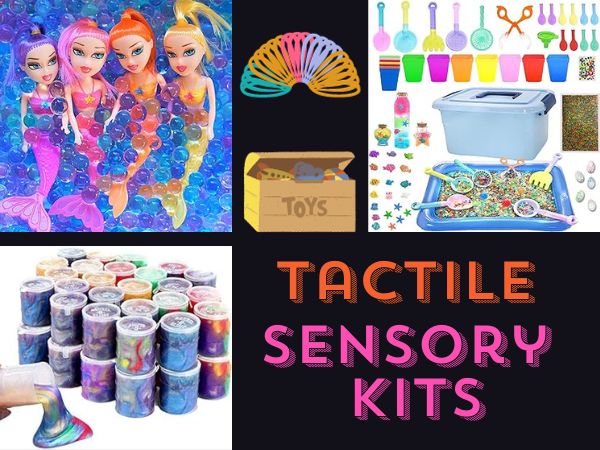
B. Visual Sensory Kits
1. Colors and Patterns for Visual Stimulation: Visual sensory kits for kids focus on captivating the eyes with a burst of colors and intriguing patterns. Consider including items like colorful scarves, kaleidoscopes, or visually stimulating toys that promote visual tracking and attention.
2. Incorporating Visual Arts into Kits: Channel the artistic side of visual stimulation by adding drawing or painting elements to the kit. Include safe art supplies, allowing children to express themselves visually and engage in creative exploration.
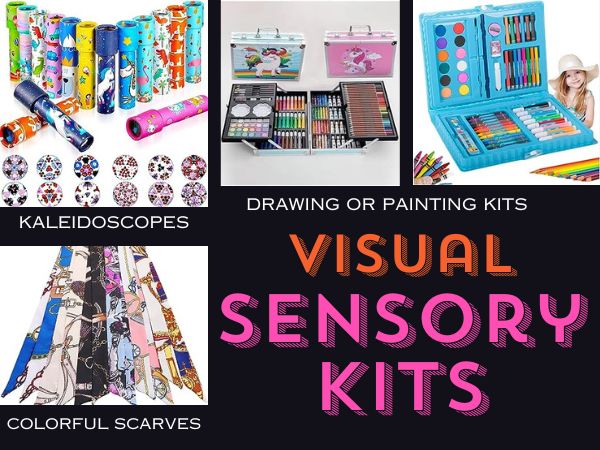
C. Auditory Sensory Kits
1. Sound Exploration Activities: Auditory sensory kits for kids bring the world of sound to playtime. Include items that make different sounds, such as rattles, bells, or crinkly fabrics. Create a space for sound exploration, allowing children to distinguish between various auditory stimuli.
2. Musical Elements in Sensory Play: Elevate the auditory experience by introducing musical elements. Incorporate a mini xylophone, a set of chimes, or even a small keyboard to encourage musical exploration. Engaging in rhythm and melody promotes auditory processing skills.

D. Olfactory and Gustatory Sensory Kits
1. Introducing Scents in Play: Olfactory sensory kits for kids engage the sense of smell through various scents. Add scented playdough, scented oils, or natural items like lavender or cinnamon sticks. Introducing different scents creates a multi-sensory experience.
2. Taste-Safe Sensory Experiences: For gustatory experiences, focus on taste-safe items. Edible playdough, flavored gelatin, or safe food items can be included to provide a safe and enjoyable taste exploration within the sensory play setting.

XX. Sensory Kits for Different Age Groups
A. Infants (0-1 year)
1. Tailoring Kits to Early Sensory Experiences: For the youngest ones, focus on simple textures, high-contrast visuals, and soft materials. Consider incorporating items that encourage reaching, grasping, and exploring with hands and mouth.
2. Safety Considerations for the Youngest Ones: Ensure all items are safe for mouthing and free of small parts that could pose a choking hazard. Supervision is key during sensory play with infants.
B. Toddlers (1-3 years)
1. Exploring the World Through Play: Toddlers thrive on hands-on experiences. Include items that encourage exploration like textured balls, building blocks, and items for stacking and sorting.
2. Age-Appropriate Activities for Curious Minds: Foster curiosity with activities that involve cause and effect, such as water play or simple puzzles. Choose materials that are safe and sturdy for active exploration.
C. Preschoolers (3-5 years)
1. Fostering Creativity and Imagination: Preschoolers are ready for more complex activities. Include items that encourage imaginative play, such as themed sensory bins or materials for pretend play.
2. Building Social Skills Through Play: Foster social interaction by including items that encourage sharing and cooperation. Consider group activities that involve sensory exploration, promoting collaboration and communication.
D. School-Age Kids (6-12 years)
1. Adapting Sensory Activities to Educational Growth: Tailor sensory activities to align with educational themes and concepts. Incorporate items that stimulate learning, such as educational games or sensory activities related to science and nature.
2. Encouraging Independence in Sensory Play: Provide opportunities for independent exploration. Include items that allow older children to take the lead in setting up and organizing their sensory experiences, fostering a sense of autonomy.
XXI. What are some sensory activities for children?
Here are some sensory play ideas for toddlers:
Sensory Activities for Infants (0-1 year)
| Activity | Description |
| Tummy time with sensory mats | Place infants on soft sensory mats during tummy time, offering tactile and visual stimuli. |
| High-contrast visual stimuli | Introduce black and white or high-contrast visuals to stimulate visual development. |
| Soft and textured toys | Provide infants with soft and textured toys, encouraging touch exploration and grasping. |
Sensory Activities for Toddlers (1-3 years)
| Activity | Description |
| Playdough and molding activities | Engage toddlers in playdough activities, promoting fine motor skills and creative expression. |
| Water play with safe containers | Create a water play area with safe containers and objects, allowing tactile and water sensory exploration. |
| Introduction to different textures | Introduce a variety of textures through fabrics, objects, and materials for tactile exploration. |
Sensory Activities for Preschoolers (3-5 years)
| Activity | Description |
| Sorting and categorizing activities | Develop cognitive skills with sorting and categorizing activities using various objects. |
| Sensory bins with themes | Create themed sensory bins with materials that align with different imaginative scenarios. |
| Simple art and craft projects | Foster creativity through art and craft projects, incorporating various textures and colors. |
Sensory Activities for School-Age Kids (6-12 years)
| Activity | Description |
| DIY science experiments | Stimulate curiosity with hands-on DIY science experiments, engaging multiple senses. |
| Outdoor nature scavenger hunts | Organize scavenger hunts in nature, encouraging exploration and connection with the outdoors. |
| Building and creating with materials | Promote creativity by providing various materials for building and creating unique projects. |
XXII. Tips for Using Sensory Kits Effectively
Ensuring the effectiveness of sensory kits involves thoughtful planning and supervision.
a. Age-Appropriate Activities
· Consider Developmental Stage: Tailor activities to match the child’s developmental stage to promote engagement without frustration.
· Rotate Activities: Keep activities dynamic by introducing new elements and rotating items regularly to sustain interest.
b. Supervision and Safety Precautions
· Choking Hazard Awareness: Ensure all items in the sensory kit are age-appropriate and free from small parts that could pose a choking hazard.
· Active Participation: Supervise playtime actively, encouraging interaction and ensuring a safe and enjoyable experience.
c. Incorporating sensory play into daily routines
1. Establishing a Routine
Incorporating sensory play into daily routines enhances its effectiveness. Here’s how to seamlessly integrate it into your child’s day:
· Morning Wake-Up: Start the day with a sensory-rich activity, like playing with textured toys or engaging in a quick outdoor exploration.
· Mealtime Sensory Fun: Use mealtime as an opportunity for sensory exploration. Discuss food textures, colors, and scents during meals.
· Bath Time Adventures: Make bath time a sensory experience by adding bath toys, scented soap, or even colored bath bombs.
2. Making it Enjoyable for Kids
· Themed Sensory Days: Dedicate specific days to themed sensory play. Whether it’s “Texture Tuesday” or “Smell & Tell Thursday,” Having a weekly sensory focus keeps it exciting.
· Family Engagement: Turn sensory play into a family affair. Join your child in the activities, ask questions, and share the experience.
· Celebrating Achievements: Use sensory play to celebrate milestones or achievements. It could be a reward for completing a task or a way to unwind after a busy day.
XXIII. Adapting Sensory Kits for Special Needs
Children with special needs may require modifications to ensure a positive sensory experience.
a. Inclusive Sensory Play
· Sensory-Friendly Materials: Choose materials that cater to various sensory sensitivities. Opt for soft, non-abrasive textures and consider the noise levels of items.
· Personalized Kits: Tailor kits to the child’s specific preferences and sensitivities, ensuring a comfortable and enjoyable experience.
b. Customization for Different Abilities
· Motor Skill Variations: Modify activities based on the child’s motor skills. Provide alternatives that accommodate their comfort level and encourage exploration.
· Sensory Exploration Strategies: Implement strategies that cater to different abilities. For example, for children with visual impairments, focus on tactile and auditory experiences.
XXIV. Sensory Kits and Educational Outcomes
Sensory play contributes significantly to educational outcomes, influencing various aspects of a child’s learning journey.
a. Impact on Academic Performance
· Cognitive Development: Engaging multiple senses simultaneously enhances cognitive skills, contributing to improved academic performance.
· Problem-Solving Abilities: The hands-on nature of sensory play fosters problem-solving abilities and critical thinking skills.
b. Enhancing Learning Through Sensory Engagement
· Cross-Curricular Integration: Integrate sensory activities into various subjects, making learning more interactive and engaging.
· Language Development: Sensory-rich experiences contribute to language development, improving vocabulary and communication skills.
XXV. Real-Life Success Stories
a. Testimonials from Parents and Caregivers
Real-life accounts from parents and caregivers highlight the transformative effects of sensory kits.
- Parent Testimonials: Hear from parents who have witnessed improvements in their child’s motor skills, attention span, and overall well-being through consistent sensory play.
b.Transformative Effects on Children
· Improved Social Skills: Some children exhibit enhanced social skills as a result of engaging in sensory play. Sharing sensory experiences with peers can foster communication and cooperation.
· Emotional Resilience: Sensory play often becomes a coping mechanism for children, helping them navigate emotions. Success stories include children developing emotional resilience through sensory exploration.
XXVI. How to make a sensory tool kit?
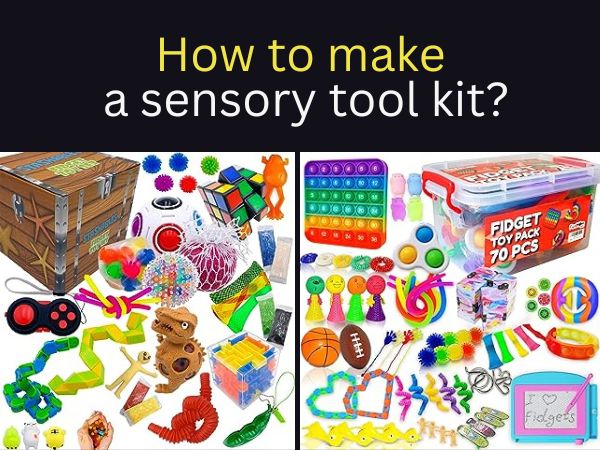
Creating a sensory toolkit for kids involves thoughtful selection and preparation.
a. Gathering Materials
· Tactile Items: Include a variety of textures like soft fabrics, fuzzy materials, and squishy items.
· Visual Stimuli: Integrate items with vibrant colors, patterns, and contrasting visuals to engage the sense of sight.
· Auditory Elements: Choose items that produce sounds or invest in musical toys for auditory stimulation.
· Scents and Flavors: Incorporate scented items or safe taste experiences for olfactory and gustatory engagement.
b. Tailoring to Individual Preferences
· Survey Interests: Understand your child’s interests and preferences to personalize the toolkit accordingly.
· Rotate Items: Keep the toolkit dynamic by occasionally rotating items to sustain interest and curiosity.
· Include Comfort Items: For children with special needs, include familiar and comforting items to create a safe sensory space.
XXVII. How to make a sensory box?
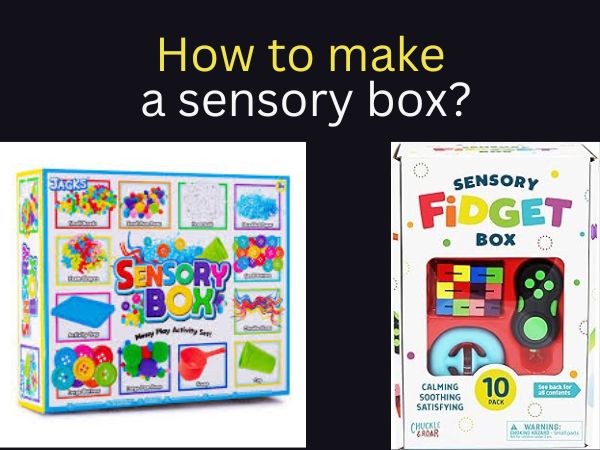
Designing a sensory box involves a creative approach to engaging specific sensory experiences.
a. Choosing a Theme
· Nature-Inspired: Include items like pinecones, leaves, and stones for a nature-themed box.
· Color Exploration: Focus on a single color or a combination of colors for a visually stimulating experience.
· Texture-Centric: Create a box with items showcasing a variety of textures, from soft to rough.
b. Filling with Relevant Items
· Include Interactive Items: Add items that encourage hands-on exploration, such as squishy stress balls, fidget spinners, or textured fabrics.
· Visual Elements: Integrate visually appealing items like glitter jars, LED lights, or objects with interesting patterns.
· Personal Touch: Consider adding a personal touch, such as a small photo or a comforting item, to create a connection with the child.
XXVIII. How to make a sensory bag at home?

Crafting a sensory bag is a simple yet effective way to provide on-the-go sensory experiences.
Simple DIY Project
· Select a Clear Sealable Bag: Choose a durable, clear bag that can be sealed tightly to prevent any leaks.
· Fill with Sensory Materials: Add materials like gel, beads, or textured fabrics to create a visually interesting and tactile experience.
· Securely Seal the Bag: Ensure the bag is securely sealed to prevent any spills. Consider reinforcing the seal with strong tape for added durability.
· Optional: Theme the Bag: Tailor the sensory bag to a specific theme, such as ocean exploration or outer space, by selecting relevant materials.
XXIX. Where can find a variety of Sensory kits for kids?
When it comes to finding a variety of sensory kits for kids, there are several great options to explore. One convenient avenue is online shopping. Websites like Amazon, Etsy, and educational toy stores often offer a diverse range of sensory kits designed specifically for children. Amazon has a lot of the best and cheapest sensory kits for different age groups of children.
XXX. Frequently Asked Questions (FAQs)
A. What are Sensory Kits?
Sensory kits are curated collections of items designed to stimulate multiple senses, fostering holistic development in children.
B. When Should I Introduce Sensory Play to My Child?
Introduce sensory play from infancy, adapting activities to the child’s developmental stage.
C. Can Sensory Kits Help Children with Special Needs?
Yes, sensory kits can be adapted to cater to the unique needs of children with varying abilities.
D. Are There Any Safety Concerns with Sensory Play?
Safety is crucial; ensure items are age-appropriate and free from choking hazards, and supervise playtime.
E. How Can I Make Sensory Play a Regular Part of My Child’s Routine?
Integrate sensory play into daily activities, finding moments where sensory experiences naturally fit.
XXXI. Conclusion
A. Recap of Key Points
- Sensory play is a powerful tool for holistic child development, impacting cognitive, emotional, and social aspects.
B. Encouragement for Parents to Embrace the Power of Sensory Play
- Embrace the journey of sensory play, tailoring activities to your child’s needs and witnessing the positive impact on their growth and well-being. So bring the sensory toys for your child.


